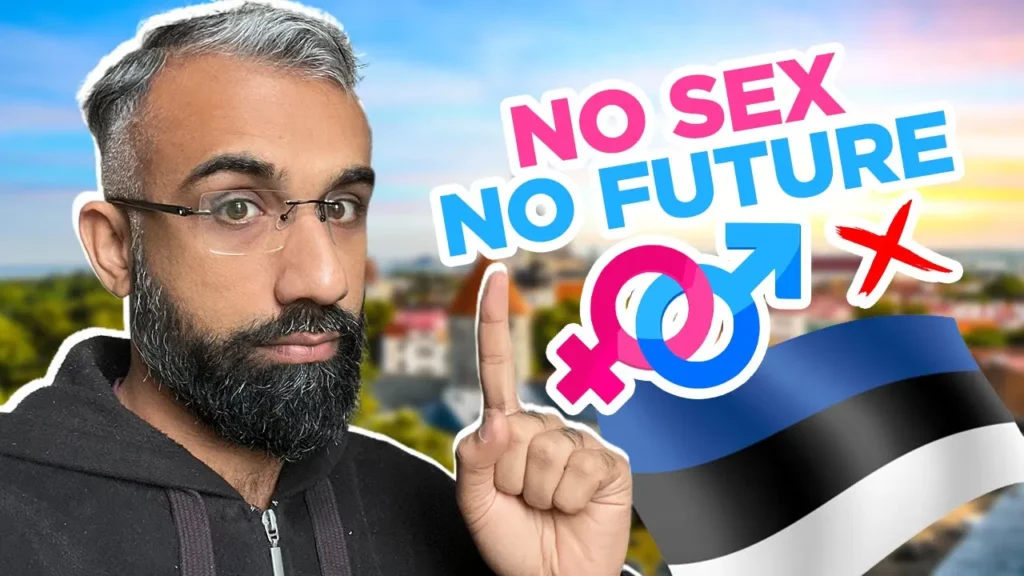8 Strange Things About the Estonian Language (From a Foreigner Who Learned It)

When you start your new life in Estonia, you expect to learn about the culture, the people, and maybe how to dress for -20°C winters. But one of the most surprising—and often hilarious—parts of adapting to Estonia is learning the Estonian language.
As someone who has taken the Estonian language exam and lived in the country for years, I can tell you: it’s not just another European language. It’s a linguistic jungle gym. So, here are eight wonderfully weird things I discovered while learning Estonian.
1. Estonian Has No Gender and No Future
Let’s start with the joke Estonians tell on themselves:
“Estonia has no sex and no future.”
It’s not a political statement—it’s a grammar lesson.
Estonian doesn’t use gendered pronouns. There’s no “he” or “she,” just one word: tema. Objects aren’t masculine or feminine either, unlike German or French.
And there’s no future tense. “I speak Estonian” and “I will speak Estonian” are said exactly the same: ma räägin eesti keelt. You figure out the timing from context.
This makes Estonian both easier and harder—easier to conjugate, harder to be precise. Welcome to life in Estonia.
2. It Comes From a Completely Different Language Family
Most European languages come from the Indo-European family. Estonian? Nope. It’s part of the Finno-Ugric language family—alongside Finnish and Hungarian.
That means the roots of Estonian are totally alien if you speak English, French, Spanish, or German. You don’t just learn new vocabulary—you unlearn how language works.
For example:
Mother: ema (Estonian) vs Mutter (German)
Father: isa vs Vater
Water: vesi vs Wasser
So if Estonia feels like a different world, it’s because linguistically, it is.
3. The Infamous 14 Cases
Estonian doesn’t use prepositions like “to,” “from,” or “with.” Instead, it attaches meaning to nouns by changing their endings.
There are 14 different noun cases. Yes, FOURTEEN.
So instead of saying “with the train,” you say rongiga. “For the train”? rongile.
Even names get declined. If your name is David and someone says Davidiga, they mean “with David.” Foreigners often struggle with this because… well, it’s completely bonkers.
4. Wobble-Land: Word Clusters That Sound Like Spells
Estonian loves to string together long compound words using vowels. You’ll often find tongue-twisting constructions like:
Jäääärse ööuurijate töö
= “The work of the night-time researchers at the edge of the ice.”
It’s poetic. It’s precise. And it’s impossible to say quickly unless you’ve had years of practice.
5. The Alphabet Has a Snake
One of the hardest sounds in Estonian is the letter õ—that “o” with a squiggly tail. It doesn’t exist in most other languages, and even after years of practice, I still get it wrong.
A comedian once described it like this:
Imagine riding a tram through an old industrial area and seeing someone smelly walk in. The sound you make? That’s õ.
Life in Estonia teaches you to make sounds your mouth didn’t know were possible.
6. Borrowed Words from Everywhere (Especially Russian)
Like any living language, Estonian borrows words from others. Some Russian words, like davai (let’s go), are used in everyday Estonian speech.
Even TikTok has Estonian cases. Yep—TikTokiga (with TikTok) is a grammatically correct sentence.
The Estonian Language Association has even added global terms like karate, tsunami, and gala into official vocabulary—with Estonian spelling, of course.
7. Estonian is Written Exactly As It’s Spoken
If you hate how English or French has letters you don’t pronounce, you’ll love this:
Estonian is phonetic. What you see is what you say.
Even absurdly long words like kuulilennuteetunneliluuk (which means something like “the hatch door of the tunnel through which a bullet flies”) are easy to pronounce—because they’re spelled exactly as they sound.
It’s a strange relief in an otherwise chaotic grammar system.
8. Estonians Speak Great English—But Mix Up He and She
Because Estonian has no gendered pronouns, many Estonians mix up “he” and “she” when speaking English.
You’ll hear someone say:
“My brother, she is coming later.”
It’s endearing, and a fun reminder that every language has its quirks—even English.
Final Thoughts on Life in Estonia (Linguistically Speaking)
Learning Estonian has been one of the most challenging and rewarding parts of my life in Estonia. It’s not just about grammar—it’s about understanding a culture that expresses itself in a uniquely compact, phonetic, and oddly gender-neutral way.
So whether you’re planning to study, work, or start a new chapter in Estonia, embrace the language. Laugh at the cases. Try to pronounce õ. And remember:
Estonia may have no future tense, but your future here could be bright.
Found this fascinating? Share it with a friend who’s planning to explore life in Estonia—or is just obsessed with weird languages.



